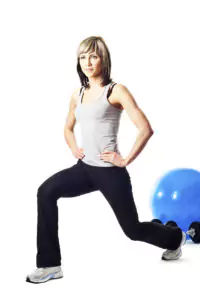The psoas (so-as) is the only muscle that directly
connects your spine to your lower body. It allows
you to walk, jump, run, or stair climb. . . anything
that requires you to lift your knee up toward your
body.
In fact, Runner’s World reports that a runner will
contract the psoas muscle more than 5,000 times
during a one hour run. Weakness or tightness in
this muscle causes an inefficient running pattern.
In addition, an irritated psoas can cause back or
hip pain and stiffness. Read more about
symptoms caused by the psoas muscle, or
identify if it’s a problem for you. . . visit last
week’s blog post.
Uncover Your Hidden Psoas Muscle for
Hip and Back Pain Relief
Here are the 7 secrets to how I was able to relieve
the pain and stiffness my psoas was causing me.
1. Relaxation
Relax the psoas muscle by deep breathing while
lying on your back. Take some deep breaths in
allowing your stomach to rise. As you exhale
your stomach will fall and gravity will relax your
spine toward the ground.
As you feel the bones of your back and pelvis
“sinking” toward the floor your psoas muscle is
relaxing. This practice of “letting go” is
important to create an internal awareness of
these deep muscles and break the habit of
keeping them tense.
2. Stretch
If you sit at a desk all day, I recommend that you
perform stretching exercises for your psoas daily.
It only takes a few minutes and can change the
way you move throughout your day.
You will stretch this muscle in a lunge position
sometimes called “runner’s stretch”. When you
stretch one leg out in front of you and one behind
you while keeping your pelvis stable, you stretch
the psoas and other hip muscles.
3. Foam Roll
Foam rolling will benefit the psoas muscle, but
you want to address the surrounding muscles
NOT the muscle itself. The psoas is a deep
structure in the abdomen and there are many
other tissues and organs in the way that could be
damaged.
Instead, foam roll your thigh muscles, buttocks,
and low back muscles to release tension. In doing
so, the psoas muscle will not have to work
overtime to compensate for these muscles.
4. Strengthen the Psoas
Strengthening the psoas muscle requires
resistance exercises that bring your trunk and
legs closer to one another.
Perform hanging leg lifts using a pull-up bar
positioned so your hang off the ground. The psoas
muscles contract when you pull your knees
toward your chest and when you control the
speed of movement as you bring your legs back
down.
5. Engage Your Core
The most effective abdominal exercise to
specifically lengthen the psoas muscle is to
alternate bringing the knees to the chest one at a
time. Exhale when the leg is outstretched, and
then switch holding the opposite leg and exhaling
again.
If you do sit ups as part of your abdominal
exercise, don’t hook your ankles under something
as this adds strain to the psoas. Instead, keep
your knees and hips flexed at 90 degrees (on a
ball or chair). This makes the abdominal muscles
work while not over stressing the psoas muscle.
6. Change Habits
Changing our habits can be the hardest strategy,
but the most beneficial in the long term. Make it
a habit to limit sitting time, especially in a leaning
forward position.
If you must sit at work, take frequent breaks.
You might even consider a workstation that allows
you to alternate between sitting and standing.
7. Soft Tissue Release
Simply stretching is often not enough to relax or
reset the psoas muscle. A trained professional
often needs to diagnose the problem, release the
muscle, and address the surrounding joints and
muscles to prevent re-injury. It’s a sensitive area
and requires relaxation of the patient as well as
skill of the practitioner.
By releasing your psoas, incorporating movements
that both strengthen and lengthen the psoas, you
can improve your movement patterns, decrease
stiffness, and relieve pain.


